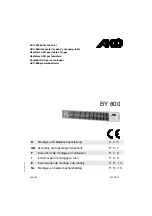
14
ONLY USE GENUINE HAYWARD REPLACEMENT PARTS
51300803801 REV B
CONDENSATE MANAGEMENT:
In certain running conditions, any pool heater can produce condensate while it is running or sweat during an off-cycle. The formation of mois-
ture on the heat exchanger depends on many factors including water temperature, humidity, flow rate, and ambient temperature which cannot
be controlled. Because of this, observations of how much condensation is created by the unit will vary greatly. Consideration has gone into the
design of Hayward’s HDF series pool heater to allow any moisture in the combustion chamber to drain out of the unit. Not allowing moisture to
dwell in the unit will increase the life and reliability of your new pool heater. The condensate formed during combustion will be slightly acidic,
about the same pH as a cup of black coffee. If condensate from the unit needs to be routed off the equipment pad or into a drain, the unit has
been supplied with a 6 foot length of rubber hosing and a connection on the bottom of the exhaust side of the unit. If a longer length is needed,
any 3/8” ID rubber hose can be connected to the drain of the unit. An overflow indicator has also been molded into the base of the unit. If a
hose is connected to the drain and water drips from the overflow port, the drain hose is likely clogged and needs to be cleaned out. This can be
done using a garden hose or compressed air after the tube is disconnected from the unit. Figure 5 shows the location of the rubber tubing in
the packaging as well as the drain and overflow locations on the unit.
Figure 5: Condensate Drain Installation
Outside Carton
6 of Condensate tubing
Consumer Kit
Condensate Drain
Connec on
Clogged Drain
Indicator
a) Loca on of tubing and consumer
kit in unit packaging
b) Loca on of drain connec on and
clogged drain indicator
c) Installa on of drain tubing
Push tubing on to connect
to drain port















































